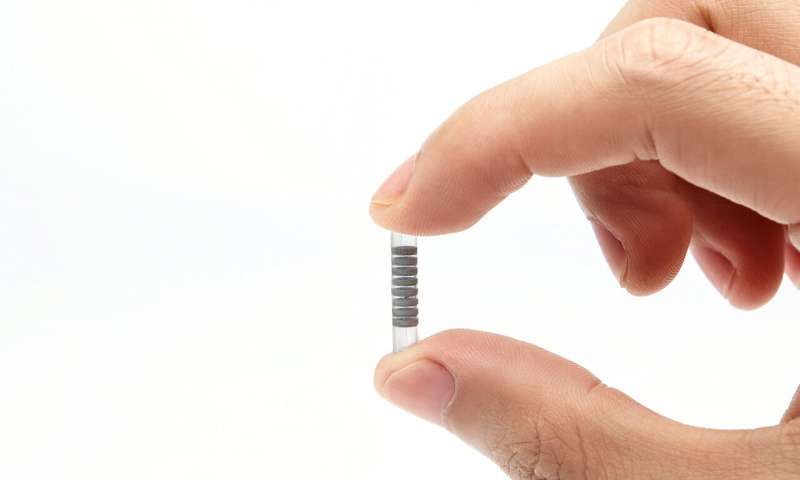Flexible and biodegradable electronic blood vessels
2. 10. 2020 | Medical Xpress | medicalxpress.com
Researchers in China and Switzerland have developed electronic blood vessels that can be actively tuned to address subtle changes in the body after implantation. The blood vessels—made of a metal-polymer conductor membrane that's flexible and biodegradable—mimic natural blood vessels, were conductive in in vitro experiments, and were able to effectively replace key arteries in rabbits.
The research, published in the journal Matter, could overcome the limitations of conventional tissue engineered blood vessels (TEBVs), which serve as passive scaffolds, by coordinating with other electronic devices to deliver genetic material, enable controlled drug release, and facilitate the formation of new endothelial blood vessel tissue.

Previous research has developed a variety of TEBVs that provide mechanical support for hard-to-treat blockages of tiny blood vessels in patients with cardiovascular disease. But these TEBVs have limitations: they cannot proactively assist in regenerating blood vessel tissue and, unlike natural tissue, often cause inflammation in response to blood flow. To surpass the limitations of existing technologies, researchers fabricated biodegradable electronic blood vessels using a cylindrical rod to roll up a metal-polymer conductor membrane made from poly(L-lactide-co-ε-caprolactone).
Read more at Medical Xpress
Image Credit: Jingyu Jiang
-jk-




